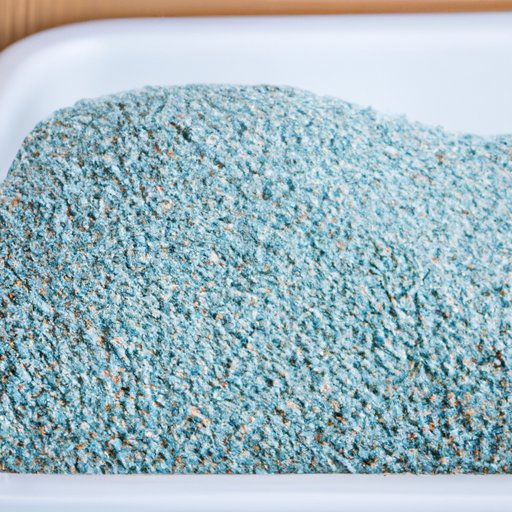
Introduction
Litter boxes are an essential part of any cat owner’s home, providing a designated space for feline friends to do their business. However, they can quickly become a source of unpleasant odors and potential health hazards when not adequately maintained. In this article, we will provide a comprehensive guide to cleaning a litter box and exploring alternative litter box options and training techniques to ensure a clean and healthy living environment for both cats and their owners.
Step-by-Step Guide to Cleaning a Litter Box
Regularly cleaning your cat’s litter box is essential in maintaining their health and hygiene. In order to keep it clean, gather all necessary tools such as gloves, a scoop, litter deodorizer, and trash bags. Begin by scooping out any waste regularly; once a week, deep clean the box with warm water and dish soap, then rinse thoroughly and let dry. It is essential to replace the litter every one to two weeks.
Health Impacts of a Dirty Litter Box
A dirty litter box can lead to a host of health issues for both your cat and you. Cats may be exposed to harmful bacteria present in fecal matter, potentially leading to urinary tract infections and other diseases. Additionally, odors emanating from a dirty litter box can cause respiratory issues for humans. Regular maintenance and cleaning can help mitigate these risks and maintain a healthy living environment for all.
Alternatives to Traditional Litter Boxes
Self-cleaning litter boxes and natural litter options are becoming increasingly popular alternatives to traditional litter boxes. Self-cleaning litter boxes do the work for you, scooping out waste automatically, while natural litter options involve using recycled paper, corn, or wood chips as the litter material. Consider your cat’s habits and preferences, as well as your home environment when selecting the right type of litter box for your home.
Training Your Cat to Use a Litter Box
Cats may occasionally refuse to use their litter box or exhibit other undesirable bathroom behaviors. To train your cat to use a litter box, begin by placing it in a private and accessible space while offering positive reinforcement for appropriate behavior. Additionally, owners can correct improper behavior by using negative reinforcement and rewarding desirable behavior. Consistency and patience are key in successfully training your cat.
Removing Stains and Odors from Litter Boxes
Stubborn stains and odors can be a persistent problem for cat owners. To remove these unpleasant smells for good, consider using natural products such as baking soda or white vinegar, which are effective in eliminating bacteria and neutralizing odors. Prevention is key to reducing lingering odors, so be sure to clean your cat’s litter box frequently and use odor-absorbing products.
Eco-Friendly Litter Box Options
Traditional litter boxes contribute to environmental pollution and waste. Eco-friendly litter box options such as biodegradable litter and compostable waste bags offer an environmentally sustainable solution. These options can help reduce your carbon footprint and contribute to a cleaner planet for both cats and humans.
Maintenance for Multiple Cats
Multiple cats require extra maintenance, both in terms of cleaning frequency and litter box quantity. Provide each cat with their litter box and ensure they are regularly cleaned and maintained. Additionally, consider investing in a self-cleaning litter box to reduce manual labor.
Conclusion
Clean litter boxes are essential for both cats and humans. By following these steps, cat owners can ensure a healthy and hygienic living environment while minimizing potential health risks. Explore alternative litter box options and training techniques to find the perfect solution for your cat and home. Putting these tips into practice will contribute to a happier, healthier living environment for both cats and their owners alike.





